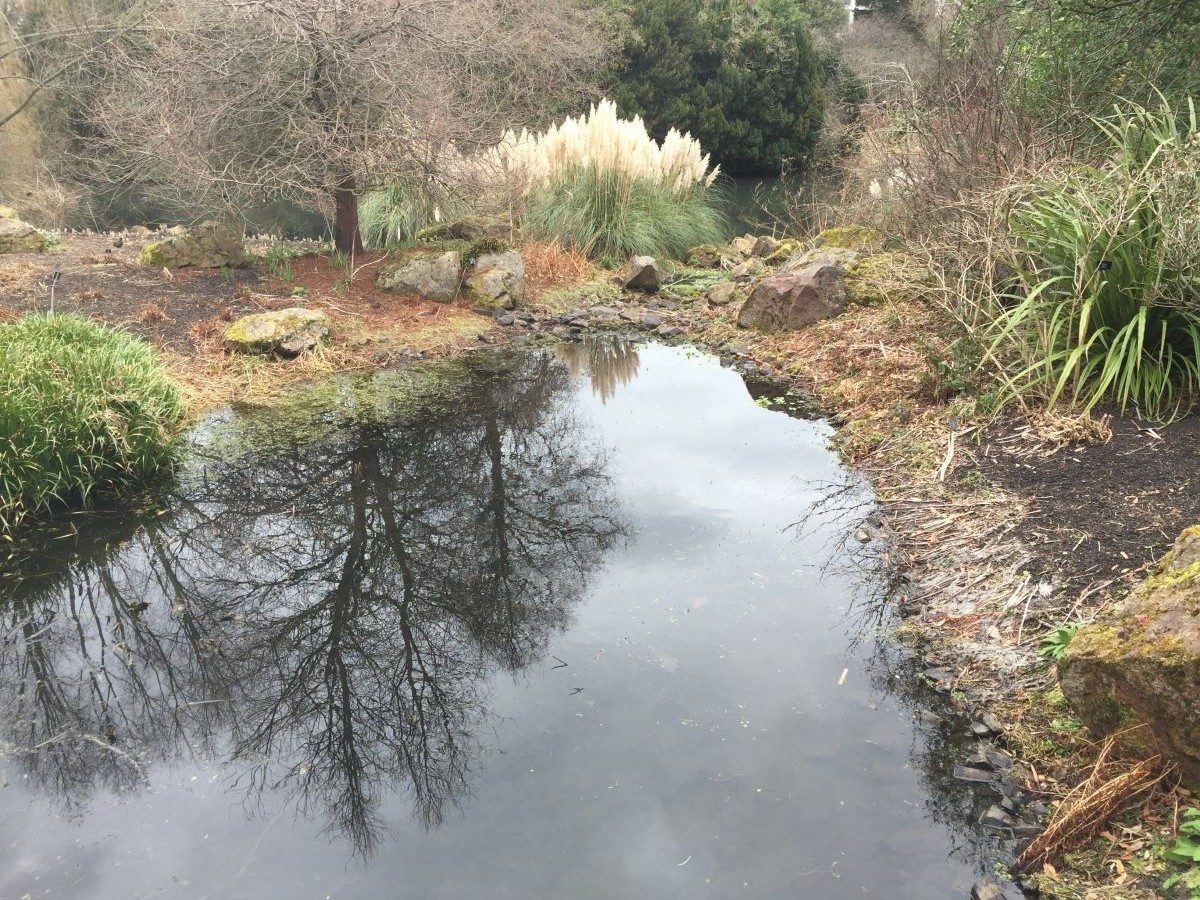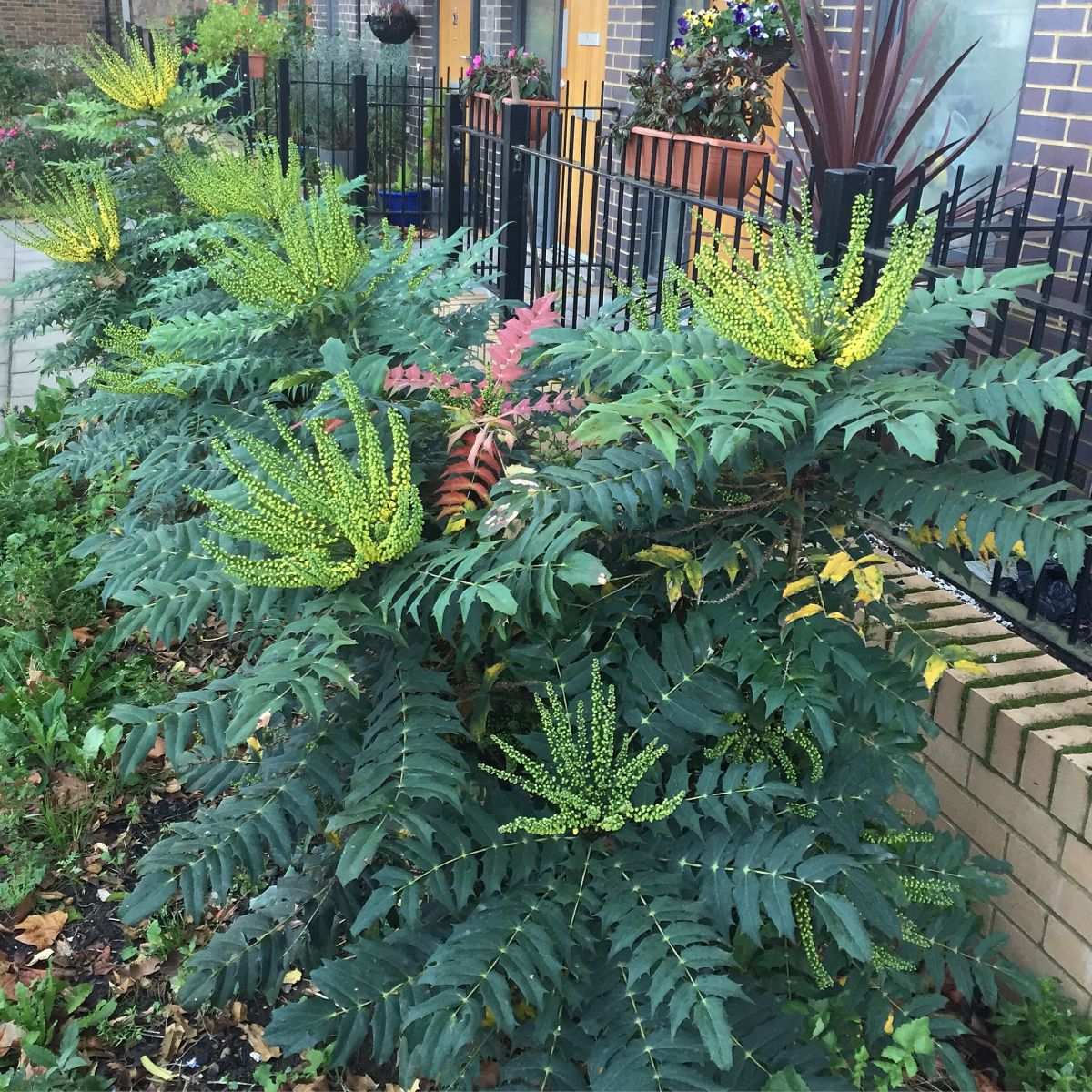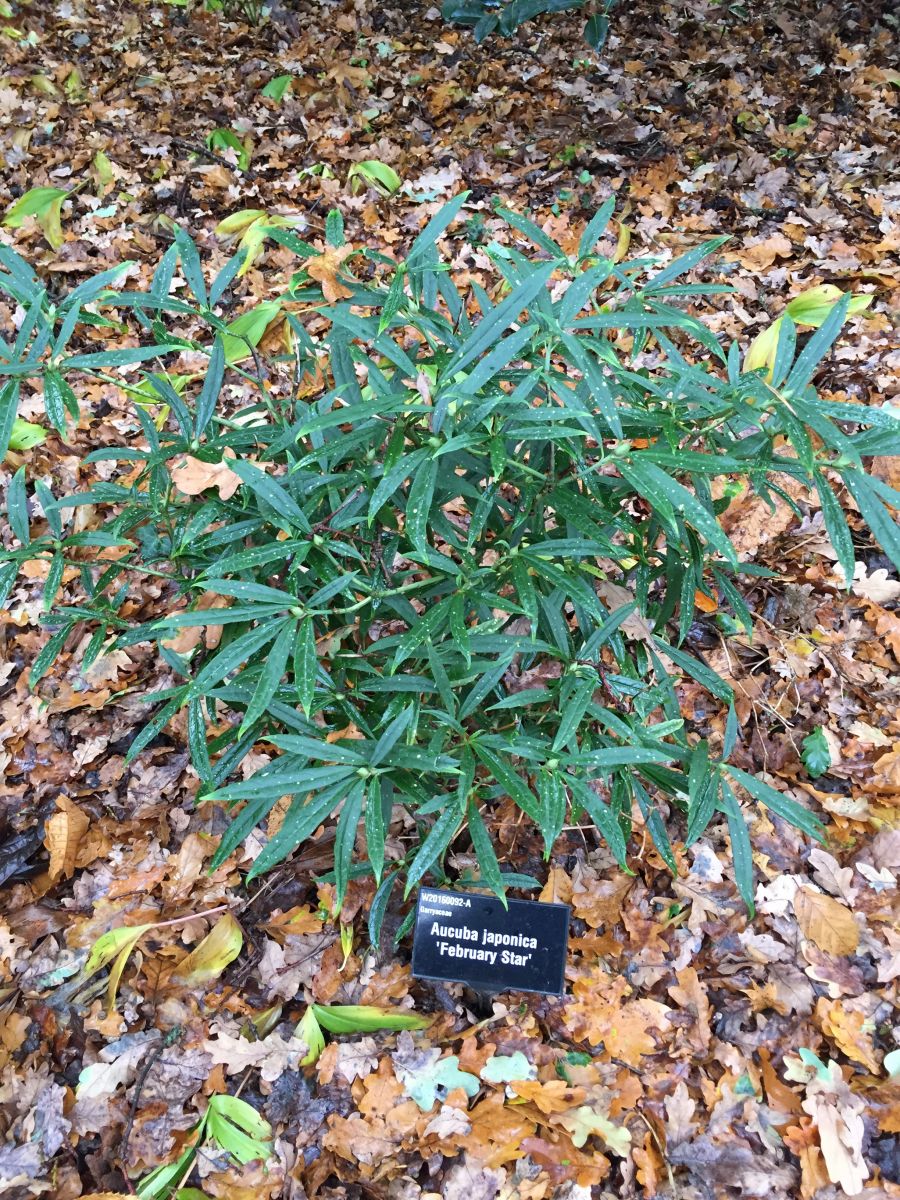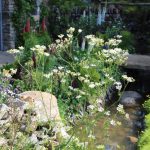We all have them, a list of plants we dislike. Yet every now and then something happens that turns our opinion on its head. Could it be that for plants, hate is the first sign of love?
Take Cortaderia selloana, Pampas grass, the notorious sign of swingers (allegedly). I’ve never liked it, stuck in gardens, solitary with its large mound of leaves with chunky and clunky looking bolt upright stems topped with a plume of Ostrich feather-like flowers. They look out of scale, out of place and blend with nothing. Then, one day, shock!
I was introduced to the above swathe of Cortaderia next to the lake at the Royal Botanic Garden Edinburgh by our tutor Monika. Suddenly I saw Cortaderia as it should be grown, a landscape sized grass, in scale with everything around it, its light colours reflected in the lake. Less is not more, more is more!
Today I was struck by the same thought when I came across this well kept swathe of Mahonia x media.
Ordinarily I am not a fan of Mahonia, its dried dark green, shiny leaves remind me too much of a cross between a holly and a rhododendron. They look too static. Then today I saw the above Mahonia, kept short with lots of flower clusters. En masse they take on a different light. Instead of looking out of place with everything else, they look hugely sculptural and lively. I also like Mahonia when pruned well to reveal the stems.
So those are two of my least favourite plants where my opinion was challenged. The alternative is to look for different cultivars of the plant to find one with a completely different look. Mahonia ‘Soft Caress’ is a case in point where Mahonia – a plant I disliked greatly – in different form has jumped to one of my favourite plants.
I save my least favourite plant for last: Aucuba japonica ‘Crotonifolia’, I hate it. It reminds me of the carpark in my primary school where I first grew to dislike its static, lurid yellow flecks that look good with nothing. Then I saw the below Aucuba ‘February Star’ at RHS Wisley last week and, although I am yet to fall in love with Aucuba japonica, it has made me wonder, can I love my most loathed plant?! It would even go well with Mahonia!







I used to hate ornamental grasses when I work at a garden centre. Mainly because they looked awful because they were kept far too wet. Now I like them (a lot).
Was there once a time when you hated Hakonechloa as well?
I never ever hated Hakonechloa. It was probably the grass that changed my mind.
Hi Jack, I too hated mahonia. I still do. When I moved here two years ago I earmarked it for removal… it’s so not a ‘cottage garden’ plant. Then I read that butterflies love it, and it’s early flowers provide much needed spring food for the emerging butterflies. How could I get rid of it after reading that?
Same with a pot of heather given to me for my birthday (do they really not know me at all??!.). Earmarked to ‘accidentally’ die, I then read about a type of butterfly that only hibernates around heather. Unlikely to be native to my un-heathery neck of the woods, but I feel I should keep it… just in case an Outer Hebrides butterfly should pass through Somerset.
It’s funny what is considered ‘cottage’ isn’t it, perhaps opinions of what a cottage is supposed to be have changed over time?!
I know how you feel about heather… I guess if there is no other heather in your area you could be doing the butterflies a favour! Cruel to be kind 😀
Hakonechloa macra ‘Aureola’ ticks about every box for something I dislike but working since march in a garden where it’s used a lot has changed my mind on it. Familiarity doesn’t always breed contempt!
Heucheras, I used to really dislike them but then came across the hybrid ‘Sweet Tea’ (I realise it’s not strictly a Heuchera) about three years ago. Since then I’ve been seeing them in a new light. Though there are wayyyyy too many of them being produced.
I cannot begin to like shrubby Potentillas and I haven’t encountered a Spirea that I’m enamoured with. It’s that scrubby look they have, just not nice.
Do lawns count? I’ve always had a strong antipathy towards ‘blank’ swathes of grass, but I’m slowly learning to appreciate their merits as part of a larger landscape, or a foil for more interesting planting. Don’t get me wrong, I still think lawns are largely a waste of good growing space, especially in a smaller garden, but I’m grudgingly conceding that they might have their place.
Hello Jack, I entirely know what you mean about the, sometimes unaccountable dislike for certain plants which, after all, are just quietly growing and minding their own business. It’s so often how we first see them – the context – that puts us off perhaps, and stops us from seeing their virtues. In my case, it was Hydrangeas. I only ever seemed to see these great blowsy flowers used by parks departments and then the rather dull-seeming dying brown floral remnants. I can’t explain exactly why I now love the genus, but they are so much more than I ever saw before and are such a valuable late flowerer, with a wide range of colours and forms. I even see the dead flower heads in a new light. Like all plants, they only want us to give them a fair crack of the whip.
I used to hate ‘garish! Dahlias and usually went with subtle & pretty white, pinks and blues. Now I love all the bright clashing colours and brilliant flowers. It’s a pity I have to lift them which is a chore, but they are worth it.
I have never liked Hostas, and have had to learn to tolerate them as OH loves them! Still can’t grow to like and am tempted to throw them to the slugs!!
I hated kniphofias until I saw them growing in the wild, covering half the side of a mountain. Still difficult to incorporate into a small garden though
Hostas- I have a general dislike of them, but that has morphed into a dislike of them apart from the ones I like. I’m still not keen on the ones with really large paddle leaves.
Hostas are my absolute favourite – good job we all like and dislike different things or all our gardens would be the same and that would be very boring
Completely agree Jennifer – variety is the spice of life and the uniqueness of a gardener’s likes and dislikes is what makes individual gardens so wonderful and interesting.